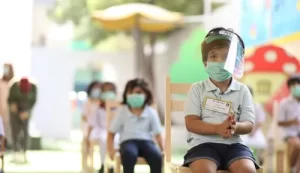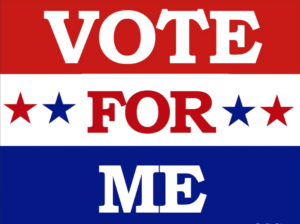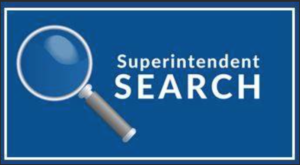

Classical vs Modern Day Education
WE ARE AMERICANS!
What does that mean?
Is it just an indication of where one lives … or is it deeper? Each country has its own traditions and values that create their culture. And culture is the reason WHY people move to any particular country.

Without an understanding of what makes America’s culture of liberty unique, we will not be able to preserve it. We must teach the next generation about the values of individual liberty and responsibility. Without personal responsibility, freedom cannot exist. This must to be taught in schools, so American values are passed down from generation to generation.
What is the difference between classical education versus current public education?
America’s first public school was the Boston Latin School, established in 1635 with the mission of preparing students for the rigor and substance of classical education in a college setting. Public education as we understand it arose in the first half of the 19th century; the first state to mandate education was Massachusetts in 1852, and the last state to do so was Mississippi in 1918.
In the 20th century, educators within the Progressive movement, such as philosopher and psychologist John Dewey, believed that education should focus on present-day concerns and interactions between student and teacher for the larger purpose of encouraging democracy and social reform. Thanks to the influence of Dewey and others, classrooms became more democratized but moved away from principles such as tradition, virtue, and authority.
Today, public schooling in the U.S. is influenced by many schools of thought. Some still model their curricula on ideals espoused by progressives such as Dewey. More recently, a movement toward teaching literature and history through a critical racial lens has evolved. On the surface, a modern classical curriculum might appear similar to a typical district school education: it includes math, science, English and language arts, history, the arts, and foreign languages.
In classical curriculum there are three stages: Grammar, Logic, Rhetoric.
Grammar
- Students are expected to comprehend phonics develop a vocabulary and learn the structure of a sentence.
- Not only rules of language but the goal is to build a foundation for future learning by establishing a knowledge base.
Logic
- Builds upon the grammar stage and teaches a student how to outline and evaluate arguments.
- Students began to dive deeper asking “why” human history developed as it did.
Rhetoric
- A student learns how to express their thoughts using the knowledge acquired during the grammar stage and the tools developed during the logic stage to make their own arguments both written and oral.
- Students craft their arguments and express original ideas.
- They voiced their opinions on events and figures and history.
Classical teachers help students engage in disagreement and argumentation while honing their thinking skills and their pursuit of truth. Many students spend their early years memorizing facts rather than developing original ideas. Classical education demands that students strive for excellence in academics but also in areas such as self-discipline and accountability. A major essential component of this model is the form of ethics or character training and that specific values matter. Classical curriculum challenges a student to be become avid seekers of knowledge and ready to challenge all arguments in the pursuit of truth this is critical to participate in a free American Society.
Just recently the “Tallahassee Classical School” asked the principal to resign after controversay about Michealangelo Sculpture.
The teacher mentioned that this was a nonpornographic picture and said, “Don’t tell your parents.”
Chairman of the Board said: Here we teach the Hillsdale Curriculum, focusing on civic and moral values. We teach a traditional, Western civilization, liberal classical education. And if there’s controversial topics or subjects, we tell parents in advance. We’re going to be sensitive to everybody at the school.
We don’t use pronouns. We teach them phonics. We teach Singapore math. They learn to speak Latin. Every student learns a musical instrument. And by the way, a large number of our students are Title I, from poor families, underprivileged families. It’s not just rich white people. We don’t even pick our students; it’s a lottery. The mission of the school shows that standards are important—even poor people have standards.
We’re not going to show the full statue of David to kindergartners. We’re not going to show him to second graders. Showing the entire statue of David is appropriate at some age. We’re going to figure out when that is.
And you don’t have to show the whole statue! Maybe to kindergartners we only show the head. You can appreciate that. You can show the hands, the arms, the muscles, the beautiful work Michelangelo did in marble, without showing the whole thing.

The updated release reads:
HILLSDALE COLLEGE STATEMENT ON SEPARATION FROM TALLAHASSEE CLASSICAL SCHOOL
“To set the record straight: This drama around teaching Michelangelo’s “David” sculpture, one of the most important works of art in existence, has become a distraction from, and a parody of, the actual aims of classical education. Of course, Hillsdale’s K-12 art curriculum includes Michelangelo’s “David” and other works of art that depict the human form.”
The Board asked this Principal to resign after many issues had arose. With the controversies of inappropriate books in the schools, stories like this make great media headlines. Florida makes it to the top and the vultures lie in wait!
Civics Alliance – American Birthright
Civics Alliance is another great resource for Classical Education.
American Birthright teaches students to identify the ideals, institutions, and individual examples of human liberty, individualism, religious freedom, and republican self-government; assess the extent to which civilizations have fulfilled these ideals; and describe how the evolution of these ideals in different times and places has contributed to the formation of modern American ideals.
This Social Studies course starts at Kindergarten through grade 12. Most high school students most likely cannot answer these questions….
Here are example questions of what “Learning to be an American” looks like for Pre-k to Kindergarten:
With guidance from the teacher, students should be able to:
- Identify and describe the events or people celebrated during United States national holidays and say why we celebrate them.
- Columbus Day Pre-Kindergarten
- Independence Day
- Martin Luther King Jr. Day
- Presidents’ Day
- Thanksgiving
- Memorial Day
- Veterans Day
- Put events in their own and their families’ lives in temporal order, including births, deaths, and important moves.
- Identify the student’s street address, city or town, and State as the state and the United States of America as the country in which he or she lives. Identify the name of the student’s school and the city or town in which it is located.
- Describe the location and features of places in the immediate neighborhood of the student’s home and school.
- Retell poems and stories from American history and folklore (e.g., Henry Wadsworth Longfellow, “Paul Revere’s Ride”; Stephen Vincent Benét’s A Book of Americans) that illustrate honesty, courage, friendship, respect, responsibility, liberty, and the wise or judicious exercise of authority, and explain how the characters in the stories show these qualities.
- Identify and describe family members or local citizens who promote the liberty, prosperity, and security of their fellow Americans.
- Demonstrate understanding that there are important {State} symbols by identifying the {State} flag and its colors and shapes.
- Demonstrate understanding that there are important American symbols by identifying:
- The American flag and its colors and shapes
- The melody of the national anthem
- The picture and name of the current president
- The words of the Pledge of Allegiance
- Define patriotism as devotion to one’s country and a commitment to contributing to its well-being.
- Identify the patriotic holidays and observances (e.g., American Founders Month, Celebrate Freedom Week, Independence Day, Martin Luther King Jr. Day, Memorial Day, Patriot Day, Veterans Day). American Birthright.
- Give examples of different kinds of jobs that people do, including the work they do at home.
- Explain why people work (e.g., to earn money in order to buy things they want, to support a family, to contribute to the community, to help others, and to take pride in earning their living).
- Give examples of the things that people buy with the money they earn.
We must demand that our Children and the next generations to come are taught American Traditions and Values so they can keep the “Legacy” going otherwise AMERICA will be lost!!!
More Articles


Don’t Ever Forget What
They Did To Our Children!

Books Requested To Be Removed From
Manatee School Libraries
Manatee School Libraries

Porn Books Removed By the Indian River School District

Manatee County
Administrator Candidates
